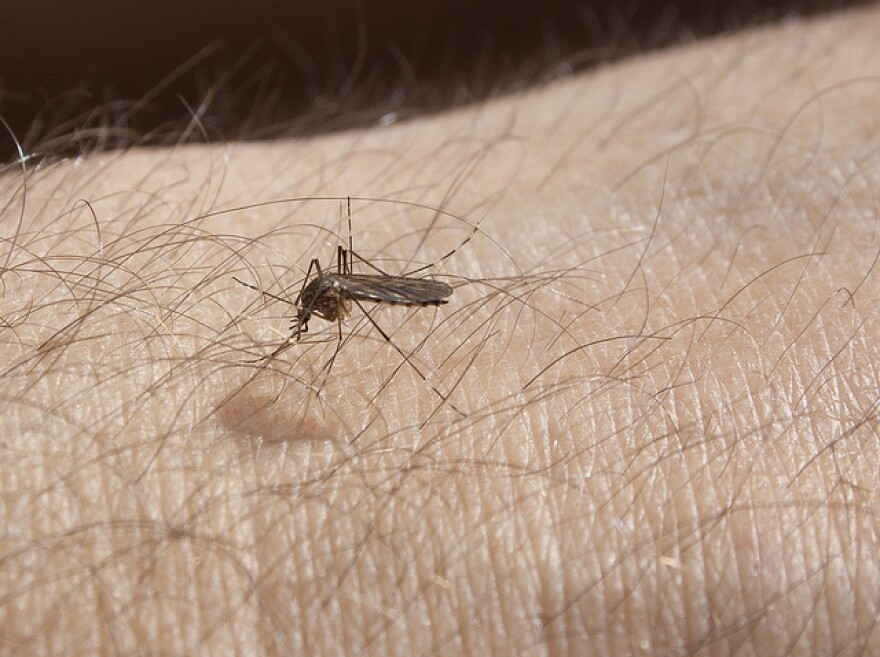Truth matters. Community matters. Your support makes both possible. LAist is one of the few places where news remains independent and free from political and corporate influence. Stand up for truth and for LAist. Make your year-end tax-deductible gift now.
This is an archival story that predates current editorial management.
This archival content was written, edited, and published prior to LAist's acquisition by its current owner, Southern California Public Radio ("SCPR"). Content, such as language choice and subject matter, in archival articles therefore may not align with SCPR's current editorial standards. To learn more about those standards and why we make this distinction, please click here.
Another Case Of Zika Hits Southland, But West Nile Is What We Should Really Be Worrying About

A 50-year-old Riverside man was confirmed Tuesday to have been infected with the Zika virus, reports KTLA. The unidentified patient, who is believed to have contracted the virus while traveling to the Dominican Republic, is expected to fully recover.
So far, there have been 19 reported cases of Zika in the L.A. County this year, with a total of 68 in California. As of Friday, more than 900 Americans who’ve traveled to countries with outbreaks have come back infected, reports the L.A. Times. While there are Zika-carrying mosquitos in the U.S., there have been no mosquito-to-human transmissions reported within the States. All the cases were contracted overseas.
While the dangers posed by Zika are undeniable, the media exposure has overshadowed another mosquito-related disease that was once talked about: the West Nile Virus.
"What people should also pay attention to is West Nile, because it's been severe," Dr. Laurene Mascola told LAist when we called to ask about Zika. Mascola is the chief of the Acute Communicable Disease Control program at the Los Angeles County Department of Health.
Mascola points to figures from 2015. Last year there were 300 cases of West Nile in the L.A. County, with 262 hospitalizations and 24 fatalities. It resulted in the second-leading record for most cases of West Nile reported in a year for the county, and the highest record of West Nile-related deaths in a year. Public health agencies began recording West Nile cases in 2004, when the initial outbreak first occurred in the Southland.

(Data via Westnile.ca.gov/)
As of yet, there haven't been any human cases of West Nile in California in 2016. That said, as records from 2015 show, infection rates spike as the temperature goes up. Last year's record outbreak did not hit its peak until late September. And cases were sparse until it began picking up in mid-August. As reported at KPCC, health officials believe that the recent upticks in West Nile cases could possibly be linked to record-breaking heat and the ongoing drought. The last two years were the hottest years recorded in California (with 2014 being first, and 2015 being second). This coincides with the highest recorded West Nile-related deaths in the state (31 in 2014 and 53 in 2015). What's the link between the heat, the drought, and mosquitos? Mosquitos like to reproduce in warmer weather. And a lack of rainfall also boosts their population; rain would wash them out of storm drains, and the dryness leads them to believe that it's summer for a larger portion of the year. Taken altogether, these factors lead to more mosquitos buzzing around in the air. Considering that 2016 has already seen its share of record-breaking heat, and that El Niño didn't live up to its reputation as one big deluge, it's not far-fetched to think that West Nile may pose a big threat again this year.
Zika and West Nile, while spread by mosquitos, are entirely separate diseases, and Mascola noted some key differences between them. While they're both transmittable by mosquitos, West Nile is mostly transmitted through the Culex genius of mosquitos, while the Zika virus is largely transmitted through the Aedes genius. According to Mascola, the Culex mosquitos mostly bite people during the dusk and dawn. Mosquitos carrying Zika, however, bite all day.
And while West Nile is mainly transmitted through mosquitos—not between humans—the Zika virus may be passed through sexual contact.
The protocol for early detection is also different between the two diseases. For Zika, Mascola recommends testing for travelers—especially expecting women—who are coming back from affected countries such as Brazil or the Dominican Republic. The window for testing is limited: if you're using a commercial laboratory you must get tested within the first four days after symptoms have cropped up. If you pass the four-day window, you'll have to send bloodwork and urine to a state lab to get an accurate reading.
Early-testing for West Nile, however, is harder to define. Basically, if you are symptomatic you will know it pretty fast: West Nile victims may suffer from debilitating meningitis and encephalitis (swelling of the brain). If you are asymptomatic, testing may be a moot point because the virus is not known to spread from human to human.
Speaking of asymptomatic, there is one similarity between the two diseases: The majority of people who have West Nile or Zika do not exhibit any symptoms. In fact, 80% of people who have either one of those diseases are asymptomatic, and less than 1% of those infected with West Nile will develop a serious neurologic illness.
Still, it's best to take precautions when it comes to mosquitos, says Mascola. She advises residents to dump out any sitting puddle of water, and to spray on some insect repellent like DEET.
"There is no good mosquito," said Mascola.
For more information on the diseases and how you can prevent infection, visit the Centers for Disease Control and Prevention's websites on Zika and West Nile.







